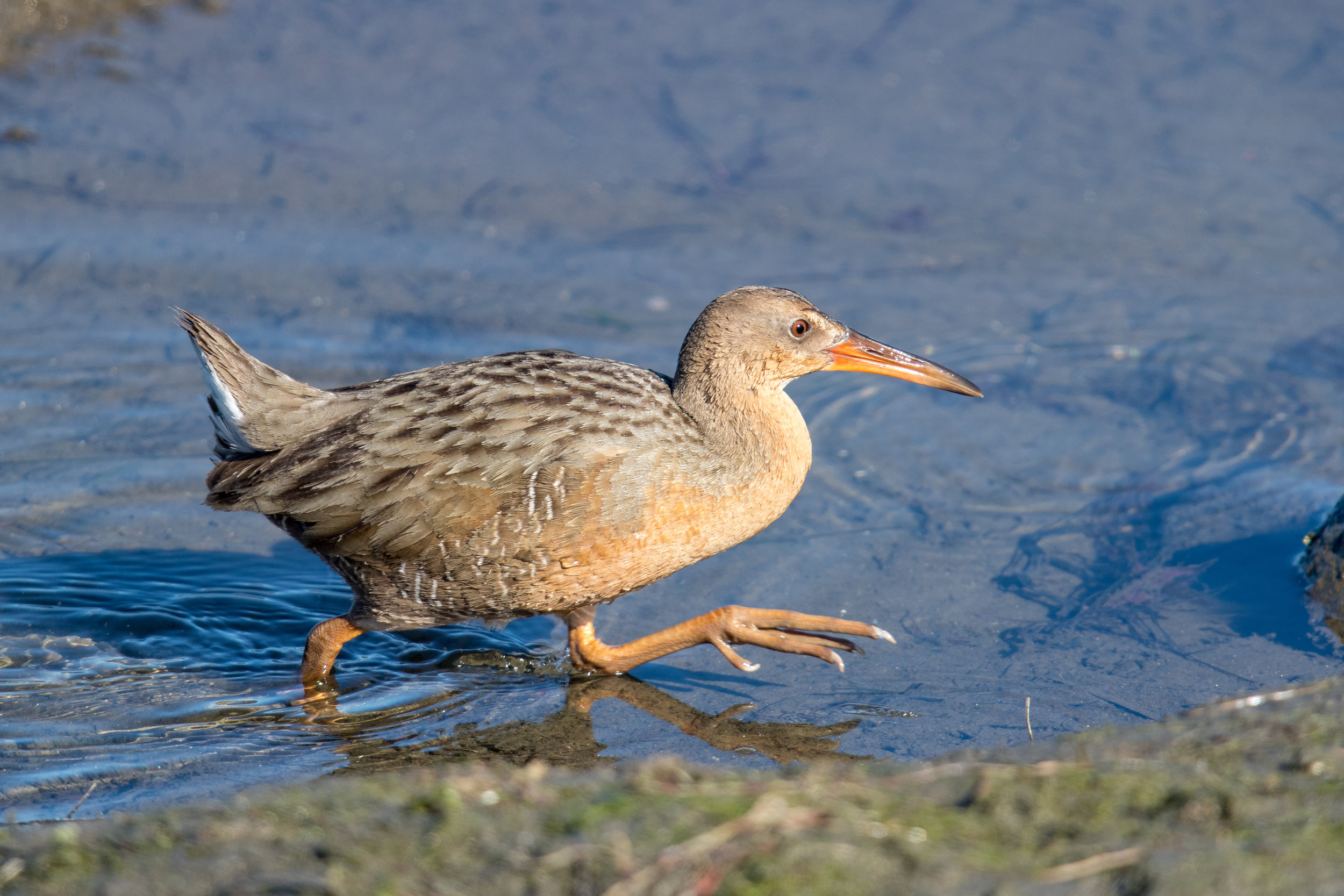Gallery - Marsh Birds
This Western North American Swallow has a white cheek and white on the sides of the rump which help separate it from the Tree Swallow.
An elegant wader, the American Avocet in Washington is a bird of small ponds of the Columbia Basin.
The Virginia Rail can be elusive, but it forages actively at dawn and dusk and can be seen along the edges of wetlands.
At nearly twice the size of other swallows, the Purple Martin is the largest swallow in the world. It flies higher than other swallows and takes months to complete its northward migration.
The Tricolored Blackbird evolved in the wetlands of Central California but in response to habitat loss and a warming climate it is expanding its range. It arrived in Washington in 1995.
The White-throated Swift is almost always seen in flight where it spends most of its time searching for insects at altitudes up to 13,000 feet.
The Ring-necked Duck is often unknown to new birders whose first look at the dramatically plumaged male brings a shot of awareness that is surprising that such a lovely duck could have not been known to them before this first observation.
The bright yellow iris of the male Brewer’s Blackbird contrasts sharply with its glossy black plumage. The female is gray by comparison, but both sexes maintain the confident, strutting air of their walk.
A conspicuous bird of freshwater marshes, the Yellow-headed Blackbird breeds in eastern Washington.
The Barn Swallow has made such good friends with human beings that it is now the most widespread and abundant swallow in the world. As humans have constructed buildings, bridges and culverts, Barn Swallows have expanded their range along with them (Brown and Brown).
The Great Blue Heron (GBHE) is about 46" long and has a wingspan of 72". The Puget Sound region has a specific sub-species, Ardea herodias fannini. It is our largest and most common heron, about the size of a Sandhill Crane.
Green Herons belong to the genus Butorides, which refers to being “bittern-like” and derives from Butor, an Old English word for bittern. They are the species virescens, from the Latin viresco, to become green (Holloway, 2003).
The Belted Kingfisher (BEKI) is 13” long with a wingspan of 20”. The genus name Ceryle (ah-SER-ih-lee) is from the Greek kerylos, a halcyon, or in Latin halcyon, a kingfisher.
The American Bittern (AMBI) is about 28” long with a wingspan of 42”. The genus name Botarus (boh-TAW-rus) is from the Latin botarus, a bittern, and the species name lentiginosus , freckled, referring to the speckled plumage.
A denizen of the evening and night when we hear its loud WOK call, the Black-crowned Night Heron is the most common heron in the world.
The Northern Rough-winged Swallow’s name often begs the question, “What is so rough about this bird’s wing?” The answer is the first primary wing feather.
Almost aristocratic in the care it takes while foraging, the Black-necked Stilt wades erectly while it carefully plucks invertebrates from a mudflat or the surface of the water. It stays away from very deep water and usually never gets its breast wet (Robinson, et al).
The Red-winged Blackbird (RWBL) is about 8-3/4" long. They are well known by the male’s orange-red shoulder patches with yellow lower edge. The females are brown above and heavily streaked below, with a buffy-to-whitish eyebrow and a sharp pointed bill.
The largest swift in North America, the Black Swift, is seldom seen, because it flies at high altitude. However, it can be seen more easily when it flies lower on overcast days.
The Vaux’s Swift (VASW) is about 4.75” long with a wingspan 12” and a weight of 0.6 oz. (17g). The genus name Chaetura (kee-TOO-rah) is Latin from the Greek chaite, stiff hair, bristle, or spine, and oura, tail: spine-tailed.
Species name is from Latin, red-backed, an allusion to the rump. A squarish tail and "buffy rump" distinguish this swallow from others in our area. Most have a dark chestnut and blackish throat with a pale forehead.
The genus name Porzana (por-Zane-ah) from the New Latin and Italian porzana, meaning the “crake” found in Europe and Asia from its rasping call
At 9”, the Virginia Rail is about the size of the King Rail but the coloration of the two birds is almost identical.
Coots, and their relatives the gallinules, behave like ducks, gathering in flocks, swimming on open water, and walking about on shore
























